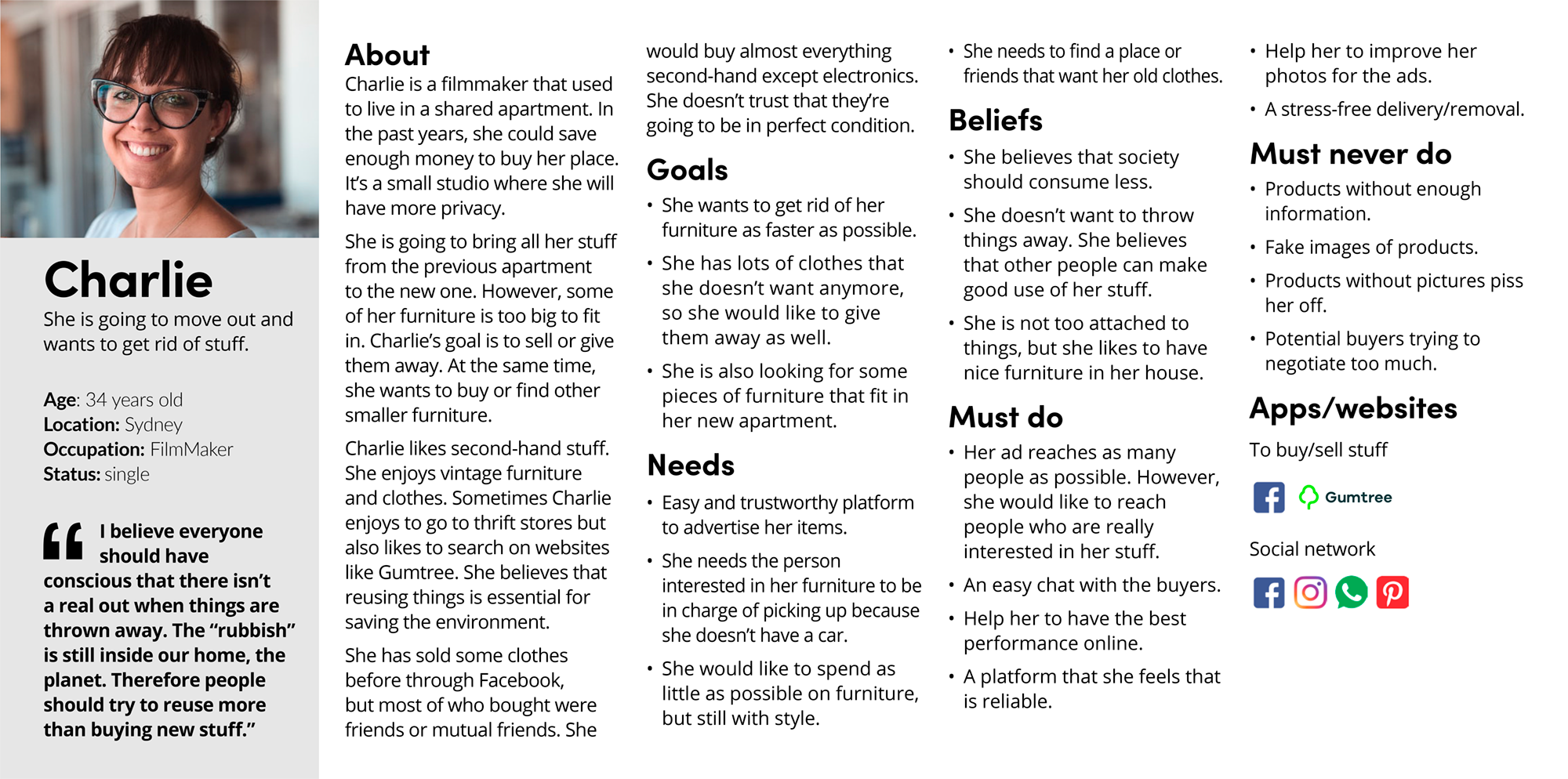Personas


Billy Blue College of Design - UX and Webdesign Post Graduation
It was reviewed under the direction of Professor Daniel Williams.
Idea, research, strategy, usability testing and visual design.
12 weeks
The discussion about lower consumption, recycling, and rubbish in landfills is increasing each year. There are significant concerns about what is going to happen to the near environment future. That’s why people have to start changing their attitudes now, and this project has this intention of trying to change the traditional mindset about buying new things.
This project aims to convince people that they can find good used stuff, and there is no reason to buy new ones. It’s known that people are still going to look for apps like these merely as a resource to get cheap things or get rid of old stuff. However, the main objective is to show that this action has a lot to do with environmental concern, and being part of slowing down the production of new things is a big step.
The competitors analyzed were chosen based ontwo criteria:
1. Apps with the same purpose (trade things/services). Average people usually don’t know thoseapps. Therefore, TradeMade and Swapub wereselected due to the ease to find on Google.
2. Websites/apps that were the most mentionedand used by people interviewed - Marketplace andGumtree
Heuristics compared were Look and Feel, PrimaryAudience, Secondary Audience, Posting and fidingan item, extra features, generative user content,categories, website, social media and newsletter.
After this analysis, it was possible to identify someaction points:
Over one week, interviews were undertakenthrough the qualitative method with 7 participants(3 women and 4 men) from different countries.The goal was to gain insights into their behaviours,attitudes, and thoughts. All interviews were carriedout face-to-face and tape-recorded. Their agesrange from 23 to 34 years old, some married andsome single.
The questions were related to the following topics: buying or getting free second-hand stuff, selling second-hand stuff, donating, trading, and delivery/pick up experience. Those questions varied according to the respondents’ answers.
All interviewees were sellers and buyers, so theyhad both views about the two sides. However,they’re considered separated personas due to abetter organisation of the content to be analysed.


In this section, a prototype was developed focusing on the main app features - to sell, to buy, to swap, and to donate things.
Afterwards, the app was tested with 5 people from different countries and ages. They were required to try to complete 3 tasks.
During the process, the user actions were recorded.After analysing them, it was possible to see repetitive mistakes and misunderstandings in some features.
It was found that the app needs changes to some labels, reset of some page layouts, and some buttons aren’t clear enough. For those reasons, not all tasks were able to be completed without help.
The average of users well understood the task processes. Still, the donation process needs to be reviewed and have more steps included, although it was easy to complete. It raised questions and doubts about how it would work.